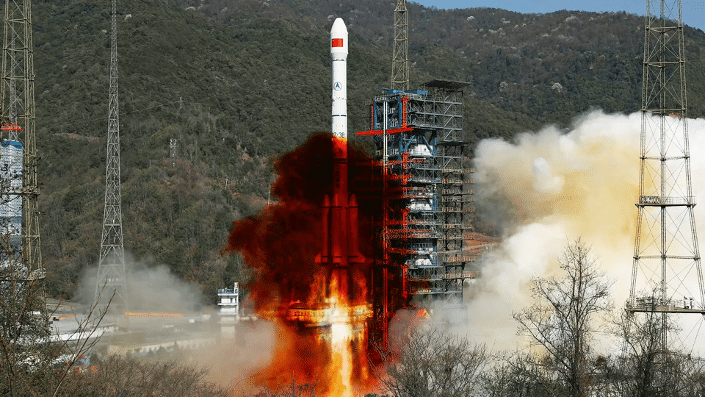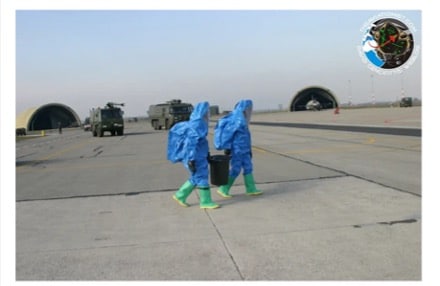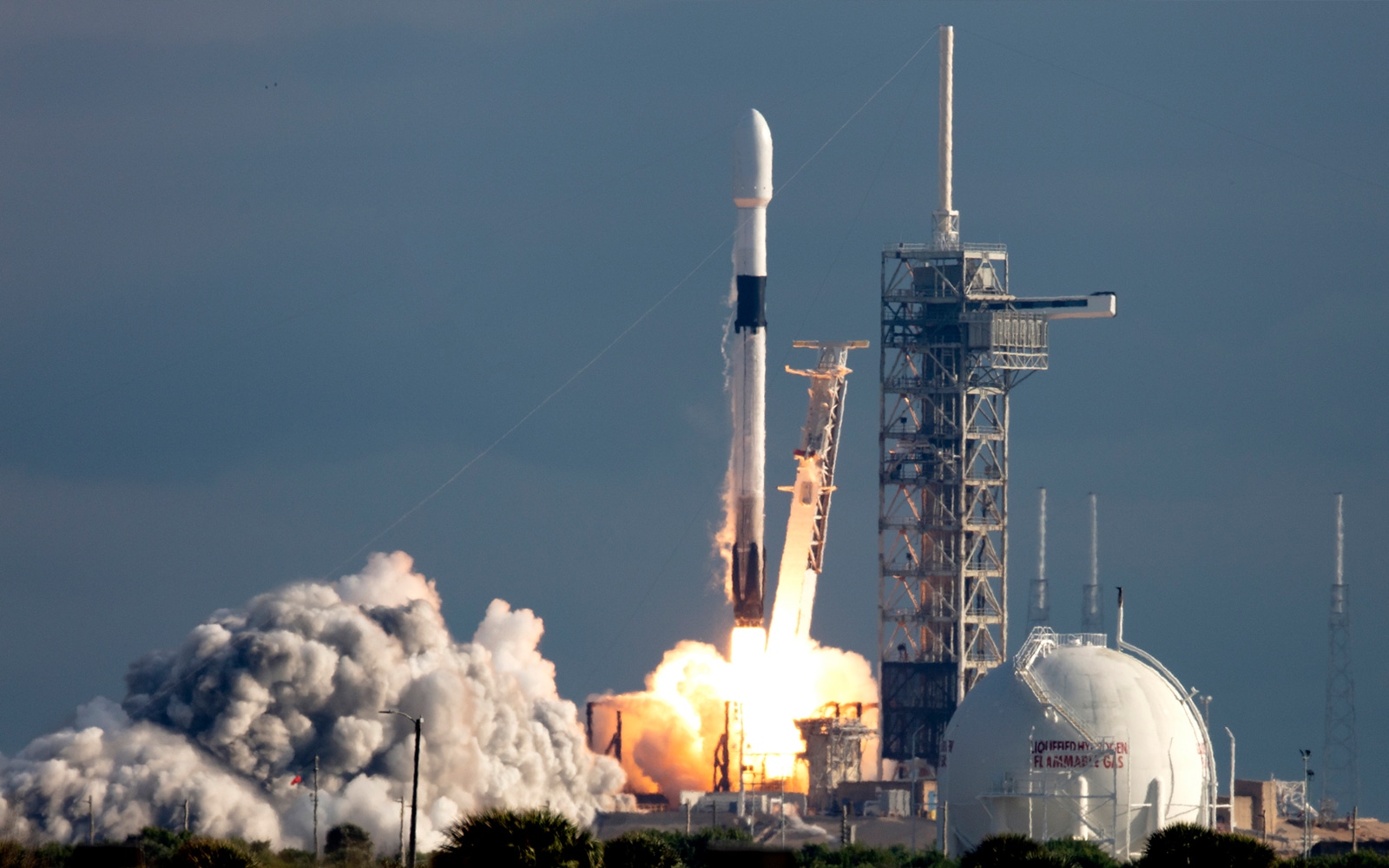- Hydrazine is a standard fuel used for rocket launches and in aircraft emergencies.
- However, extreme care is needed in its storage, transportation, handling, and hazard response due to its toxicity, inflammability, and environmental impact.
- Monitoring and early hydrazine gas detection can be crucial to reduce risks to lives, property, and the environment as long as it is used in the industry.
Hydrazine’s derivatives are commonly used in rocket propulsion and aircraft emergency power units because of their positive characteristics. Still, environmental and health concerns exist due to its toxicity and the potential for pollution in emergencies. Find out where aerospace personnel can be at risk and how to tackle these challenges through proper training and hydrazine gas detection.
Hydrazine Use in the Aerospace Industry
Hydrazine, a colorless and flammable liquid with an ammonia-like odor, is commonly employed in the aerospace industry. Its chemical formula is N2H4, and it is highly reactive and toxic. It and its derivatives serve multiple purposes in aerospace applications, such as functioning as a rocket fuel, being part of spacecraft propulsion systems, and in emergency power units for aircraft.
Our ability to explore the solar system or any other part of space depends on rocket propellants, which enable vehicles to overcome gravitational forces and reach space. The fuel choice significantly influences a rocket’s performance parameters, including weight, power, efficiency, toxicity, and environmental impact.
There are three types of rocket fuels: solid, liquid, and hybrid. Liquid fuels are often considered the most reliable among the various propellant types.
Hydrazine is one of the most effective liquid propellants, known for its derivatives like unsymmetrical dimethyl hydrazine (UDMH) and monomethyl hydrazine (MMH). UDMH, in particular, is hypergolic, which ignites spontaneously upon contact with an oxidizer, like nitrogen tetroxide (N2O4), eliminating the need for an ignitor.
Hydrazine has favorable characteristics, including high combustion stability, high density, energy efficiency, lightness, and long storage life. These qualities make it suitable for repetitive engines used in orbital maneuvers. However, its main drawbacks are its high toxicity and potential environmental risks.
Despite these risks, hydrazine remains in use due to the lack of equivalent alternatives. Therefore, researchers and space agencies actively explore alternative fuels that balance performance with environmental and safety considerations.
Hydrazine Risk Points
Hydrazine dangers arise both during routine usage and in the event of crashes of rockets and fighter planes.

“China’s Long March 3B Y90 rocket launch, with sinister-looking billowing bright reddish plume that engulfs the rocket as it lifts off,” Parken, 2023. (Image credits: https://www.thedrive.com/the-war-zone/why-chinese-rockets-spew-toxic-bright-red-gas-clouds-on-launch)
Rocket Use
In the case of hydrazine as fuel for rockets, there are three situations where the fuel can pose dangers to people and the environment:
- Launches: In hypergolic rocket systems, dinitrogen tetroxide and hydrazine derivatives ignite spontaneously upon contact. This combustion generates toxic gases seen as red clouds around some rockets blasting off, along with heat energy; see Figure 1.
These gases pose health risks. Safety protocols must be in place during rocket launches to mitigate the potential impact on the environment and human health.
- Boosters: The second danger arises when rocket boosters drop down and spill the hypergolic fuels containing hydrazine.
- Crashes: The third situation arises from rocket crashes where fuel again spills out or causes explosions.
Both booster and rocket crashes create hazardous situations that must be handled carefully.
Hydrazine Use in Aircraft
The F-16 fighter aircraft uses hydrazine (H-70, 30% diluted by water) for its Emergency Power Unit (EPU) in emergencies, such as engine flame-out. Due to hydrazine’s toxicity and flammability, its special handling is necessary for two types of events: emergency landing and crashes.
Emergency Use of Hydrazine: An emergency landing activates the hydrazine-propelled EPU. Elaborate safety procedures are usually in place to prevent harm to pilots and the release of hydrazine vapors after emergency landings. For example, pilots should taxi the aircraft against the wind to avoid vapor dispersion. Decontamination zones must be established, firefighting and ground crew with protective gear must contain hydrazine leaks and carry out decontamination measures. See Figure 2.
Crash Risks: The impact site of a crashed F-16 can be hazardous due to hydrazine. Special procedures are required to manage crashes and possible hydrazine leaks.
Squadrons with F-16s must conduct periodic training related to occupational health requirements to ensure readiness for responding to hydrazine emergencies.

Figure 2: “The hydrazine response team begins containing the spill, preparing, and decontaminating the aircraft,” Cenciotti, 2019. (Image credits: https://theaviationist.com/2019/05/19/hydrazine-a-significant-hazard-each-time-an-f-16-crashes-or-fires-up-the-emergency-power-unit/)
Why is Hydrazine Hazardous?
Several reasons are listed below for making hydrazine hazardous for people and the environment.
Toxicity
Hydrazine is highly toxic, and exposure to it can lead to severe acute and chronic health effects impacting the skin, eyes, respiratory tract, and internal organs.
Acute effects: Acute exposure, either inhalation or skin absorption, can lead to immediate symptoms like nose, throat, and eye irritation, headaches, dizziness, and nausea.
Exposure to anhydrous hydrazine may result in burns that resemble those caused by acidic substances, leading to hair dissolution. Allergic contact dermatitis may manifest, eye contact can induce temporary blindness, and liquid splashes may cause corneal injuries and burns.
Ingestion or inhalation of hydrazine can be fatal. Acute poisoning in humans is characterized by vomiting, severe irritation of the respiratory tract leading to pulmonary edema, central nervous system depression, and damage to the liver and kidneys.
Chronic effects: Chronic exposure, especially for individuals working with hydrazine over an extended period, may result in long-term health issues. Additionally, exposure to hydrazine has been associated with an increased risk of incident lung and colon cancers, as indicated by a study involving aerospace workers.
Protective measures, such as using personal protective equipment (PPE) like gloves, goggles, and engineering controls to minimize exposure, are crucial when working with hydrazine. Additionally, proper training, handling procedures, and emergency response protocols are essential to mitigate the risks associated with this toxic chemical.
Fire and Explosion Hazard
Hydrazine poses significant fire and explosion hazards, especially in the aerospace industry. It is a flammable liquid with self-ignition risk at low temperatures, forming explosive mixtures with air. Poisonous gases, such as ammonia and nitrogen oxides, can be produced in a hydrazine fire. Containers may explode in a fire situation. Vapors can travel to a source of ignition and result in a flashback.
Detection systems are crucial for early leak identification, providing timely intervention and preventive measures. Strict preventive measures and emergency response plans should be in place to ensure safety in handling hydrazine.
Employees fighting hydrazine fires must adhere to the USA’s OSHA Fire Brigades Standard (29 CFR 1910.156). Recommended extinguishing agents include dry chemicals, carbon dioxide (CO2), water spray, or alcohol-resistant foam. Water spray is advised to cool fire-exposed containers.
Environmental Concerns and Risks
The environmental impact of hydrazine is a concern, primarily due to the release of various pollutants into the atmosphere during rocket launches. Some of the environmental problems associated with hydrazine include:
- Toxic Emissions: Launches produce poisonous substances such as ammonia, hydrogen, and nitrogen gases, which harm air quality.
- Greenhouse Gas Emissions: Rocket launches release CO2 into the atmosphere. Though the amounts are not enormous – around 25,000 tons of CO2 annually, they are released in the upper layers of the atmosphere, potentially leading to ozone depletion and other atmospheric changes. Therefore, their impact is significant.
- Accidental Releases: In the event of crashes, emergency landings, and accidents, there is a risk of spills or releases of rocket propellants and aircraft EPU fuel, which can contaminate the surrounding environment, including soil and water bodies, and affect flora and fauna.
Equipment Integrity
Hydrazine can be corrosive to specific materials, and its presence may lead to degradation and damage to equipment over time. Regular hydrazine gas detection and monitoring levels help maintain the integrity of aerospace vehicles and associated components, ensuring their safe and reliable operation.
For detailed information on safe workplace practices, controls, and handling of hydrazine hazards and emergencies, check this New Jersey Department of Health resource.
Regulatory Compliance
Many regulatory agencies, both national and international, have established guidelines and limits for occupational exposure to hydrazine. Aerospace organizations must adhere to these regulations to ensure the health and safety of their personnel. Implementing hydrazine gas detection systems helps meet regulatory requirements and standards.
In the USA, the hydrazine permissible limits are as follows:
- According to the Occupational Safety and Health Administration (OSHA), the permissible exposure limit (PEL) for hydrazine in the air is 1 ppm (parts per million), averaged over an 8-hour work shift.
- The National Institute for Occupational Safety and Health (NIOSH) recommends the airborne exposure limit (REL) should not exceed 0.03 ppm during any 2-hour work period.
- American Conference of Governmental Industrial Hygienists (ACGIH) sets the threshold limit value (TLV) at 0.01 ppm, averaged over an 8-hour work shift.
Since hydrazine may be carcinogenic to humans, and given the potential risks associated with carcinogens, minimizing all forms of contact is advisable.
Additionally, it’s crucial to recognize that the specified exposure limits only cover air levels. In skin contact, there is a risk of overexposure, even if air levels remain below the stated limits.
Hydrazine Gas Detection to Minimize Risks
In summary, hydrazine gas detection is essential in the aerospace industry to safeguard human health, protect the environment, prevent fire and explosion hazards, maintain equipment integrity, enable prompt emergency response, and ensure compliance with regulatory standards.
Detection systems can trigger alarms and automatic shutdown procedures, allowing personnel to respond quickly, contain the situation, and mitigate potential hazards. In these situations, portable, accurate devices such as the GasD 8000 Series Portable Gas Analyzers produced by Interscan that give readings in less than one second can be live-savers. Four Interscan devices can detect trace amounts starting from zero concentrations to 100-1000 ppb (parts per billion), so they will help the aerospace industry with regulations and risk control.
Written by:
 Vijayalaxmi Kinhal
Vijayalaxmi Kinhal
Science Writer, CID Bio-Science
Ph.D. Ecology and Environmental Science, B.Sc Agriculture
Sources
Cenciotti, D. (2019, May 19). Hydrazine: A significant hazard each time an F-16 crashes (or fires up the emergency power unit). The Aviationist. https://theaviationist.com/2019/05/19/hydrazine-a-significant-hazard-each-time-an-f-16-crashes-or-fires-up-the-emergency-power-unit/
Hydrazine hydrate market size, growth, forecast 2023-2028. stratviewresearch.com. (2024, January 25). https://www.stratviewresearch.com/2594/Hydrazine-Hydrate-Market.html
Parken, O. (2023, March 22). Why Chinese rockets spew toxic bright red gas clouds on launch. The Drive. https://www.thedrive.com/the-war-zone/why-chinese-rockets-spew-toxic-bright-red-gas-clouds-on-launch
Power demonstration of green propellant for F-16 emergency power unit. (2022, December 25). https://serdp-estcp.mil/projects/details/7ada7baf-001b-4471-957e-a99c1097e154/wp21-5018-project-overview
Pradhan, S. K., Kedia, V., & Kour, P. (2020). Review on different materials and their characterization as Rocket Propellant. Materials Today: Proceedings, 33, 5269–5272. https://doi.org/10.1016/j.matpr.2020.02.960
Thorpe, E. (2023, August 17). Rocket fuel types: From hydrazine to Green Propellants. Orbital Today. https://orbitaltoday.com/2022/04/07/making-space-greener-from-hydrazine-rocket-fuel-to-green-propellants/
Right to know hazardous substance fact sheet. (n.d.-b). https://nj.gov/health/eoh/rtkweb/documents/fs/1006.pdf

